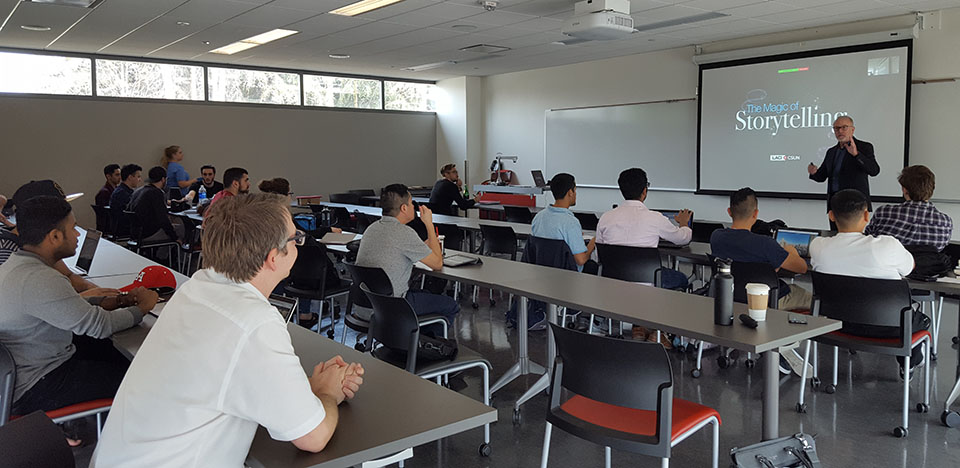VARJAM Workshops Prepare Competitors with New Tools and Ideas
California State University, Northridge began preparations for the VARJAM competition on March 10 with a daylong workshop to help students gain access to the tools and knowledge for creating virtual reality (VR) and augmented reality (AR) projects.
The VARJAM event was broken down into six separate hour-long workshops to help students brainstorm for their projects. The workshops took place in the Extended Learning Commons building throughout the day.
“I came into this competition thinking that I wasn’t going to get any instruction whatsoever and I was going to learn along the way somehow, but there’s actually workshops,” said senior Glenda Gonzalez, a computer engineering major joining VARJAM. “I like the way it’s guided and tailored to every single aspect that you need for this competition.”
Jacob Enfield, multimedia option head who has been leading the VARJAM project, kicked off the day by speaking to students. He spoke about the concept of getting, creating and editing photospheres—a 360-degree panorama photo of your surroundings.
Attendees learned about the types of cameras, tools and software they could access from the Creative Media Studio in the Oviatt Library to create a photosphere such as Android phones, 360 cameras and Adobe Photoshop. They also learned how to embed a completed photosphere onto a website or make it viewable in VR. The next workshop explained how to connect and add in multimedia aspects into completed photospheres.
Following the photosphere workshops was a speaker presentation on the art of storytelling by Tom White, the executive director of LACI@CSUN.
“A great story can live around a campfire, between a group of people or it can be projected to a group of thousands,” said White. “But ultimately it’s that story and the human emotional connection that must be conveyed in whatever medium people are using.”
White said embracing customer experience will help competitors create a story where they are familiar with a market to find what is missing in people’s lives – find the need, identify the market and fill in the holes.
After White’s presentation, attendees took a lunch break before moving to another room for the remaining three workshops: unity basics, augmented reality and 360-degree video.
The unity basics workshop introduced people to the unity interface – a multi-platform game engine that allows an individual to create a 2D or 3D game. They learned how to gain access to 3D objects, characters, animations and scripts to make their projects come to life and how to set up an interactive scene in VR using hand-held controllers.
The next workshop focused on practical aspects of AR. Attendees were taught the different uses and challenges of AR and how to create AR content within minutes using various tools and methods.
The last workshop was about 360-degree video and showed attendees how to create and edit 360-degree videos using beginner tools.
At the end of each workshop presentation attendees were given the opportunity for a question-and-answer session with one or all of the presenters or to practice what they learned using the tools and methods provided to them.
Michael Serrano, a senior broadcast journalism major who attended all six workshops, said, “This workshop gives you more tools to arm you with the knowledge to go out and find different foundations and avenues to fulfill the project in any type of way.”


 experience
experience